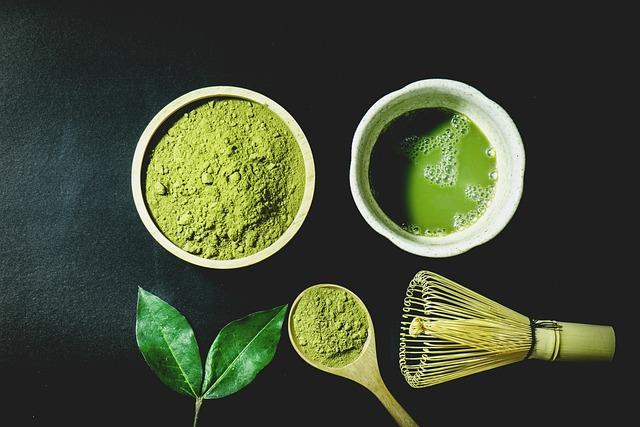Welcome to The Daily Dose, your trusted source for all things health and wellness. In today’s edition, we turn our attention to a controversial herbal supplement that has gained increasing popularity in recent years: kratom. With its origins rooted in Southeast Asia, kratom has become a subject of fervent debate as it finds its way into the lives of many seeking alternative solutions for chronic pain, anxiety, or fatigue. In this article, we delve into the topic of safe kratom consumption, examining the potential benefits, risks, and precautions one should consider when incorporating this substance into their daily routine. Whether you are a seasoned kratom enthusiast or just curious about this intriguing plant, join us as we explore the fascinating world of kratom and shed light on its responsible and optimal use.
1. The Growing Popularity of Kratom: A Closer Look at Safe Consumption Practices
The popularity of Kratom has been on the rise in recent years, as more individuals are seeking alternative remedies for various ailments. However, it is crucial to understand safe consumption practices to ensure that the potential benefits of Kratom can be maximized without any adverse effects.
What are safe consumption practices for Kratom?
- Start with low doses: It is recommended to begin with a small dosage of Kratom to gauge individual tolerance levels. This approach allows for a gradual adjustment and can minimize the risk of adverse reactions.
- Understand strain differences: Kratom comes in various strains, each with its own unique properties and effects. It is essential to research and choose the strain that aligns with your specific needs and goals.
- Stay hydrated: Kratom has diuretic properties, which can contribute to dehydration. It is crucial to drink plenty of water throughout the day to maintain hydration levels.
- Take breaks: Regularly taking breaks from Kratom can prevent tolerance buildup and reduce the risk of dependence. It is advisable to abstain from consuming Kratom for a few days or weeks periodically.
- Consider potential interactions: Kratom may interact with certain medications or substances. If you are currently taking any prescription drugs, it is vital to consult with a healthcare professional to avoid any possible complications.
- Seek reliable sources: When purchasing Kratom products, it is crucial to ensure they come from reputable sources. Reliable vendors will provide transparency regarding the quality, purity, and origin of their products.
By following safe consumption practices, individuals can make informed decisions and reap the potential benefits of Kratom while minimizing potential risks.

2. Understanding the Controversy: Is Kratom Consumption Safe or a Cause for Concern?
The controversy surrounding kratom consumption revolves around the safety and potential risks associated with its use. Proponents argue that kratom is a natural and effective alternative to traditional medications for managing pain and anxiety. They highlight its long history of traditional use in Southeast Asia and emphasize its potential benefits, such as increased energy and focus, pain relief, and mood enhancement.
However, critics express concerns about the lack of regulation and scientific research on kratom, which leaves its safety and efficacy uncertain. One key concern is the potential for addiction and abuse, as kratom stimulates the same opioid receptors in the brain as some prescription drugs. Another worry is the presence of substances in kratom products that may be harmful or contaminated. Additionally, some experts worry about the potential for kratom to interact negatively with other medications, and the risks associated with its use during pregnancy and breastfeeding.
- Proponents argue:
- Kratom is a natural and effective alternative to traditional medications for pain and anxiety
- It has a long history of traditional use in Southeast Asia
- It can provide increased energy and focus, pain relief, and mood enhancement
- Critics express concerns about:
- The lack of regulation and scientific research
- Potential addiction and abuse
- Possible harmful or contaminated substances
- Negative interactions with other medications
- Risks during pregnancy and breastfeeding

3. Kratom: Exploring Dosage Guidelines and Potential Health Benefits
When it comes to using Kratom, determining the proper dosage is key to reaping its potential health benefits. While there is no one-size-fits-all answer, understanding dosage guidelines can help you navigate this natural herb effectively. Here, we explore dosage guidelines for Kratom along with its potential health benefits:
Dosage Guidelines for Kratom:
- Low dose: Typically ranges from 1 to 5 grams of Kratom powder. This dosage is known for its stimulating effects, boosting energy levels, and enhancing focus.
- Moderate dose: Generally falls between 5 and 10 grams. At this dosage, Kratom can produce more relaxing effects, relieve anxiety, and provide mild pain relief.
- High dose: Usually exceeds 10 grams. High doses of Kratom may lead to sedation, analgesia, and a sense of euphoria. It’s important to exercise caution when taking higher doses and to gradually increase your dosage to avoid any potential side effects.
Potential Health Benefits of Kratom:
- Pain relief: Kratom has been traditionally used as an analgesic, providing relief from chronic pain conditions such as arthritis, fibromyalgia, and migraines.
- Anxiety and depression management: Some studies suggest that certain Kratom strains may have potential mood-enhancing benefits, promoting relaxation, reducing anxiety, and alleviating symptoms of depression.
- Increased focus and energy: Kratom’s stimulating effects can help improve concentration, enhance productivity, and boost motivation levels.
While Kratom holds promise for its potential health benefits, it’s essential to consult with a healthcare professional before incorporating it into your wellness routine. Additionally, it’s crucial to source high-quality Kratom from reputable vendors and to start with the lowest effective dose to evaluate your body’s response. Remember, every individual may react differently to Kratom, so listening to your body’s signals is key.

4. Kratom Strains and Varieties: Finding the Right Fit for Safe Consumption
In the world of kratom, there are various strains and varieties available, each offering unique effects and characteristics. Finding the right fit for safe consumption is essential to ensure a positive experience. Here, we will explore some of the popular kratom strains and varieties, detailing their origins, properties, and potential benefits.
Kratom Strains:
- Red Vein Kratom: Coming from mature red-veined leaves, this strain is known for its relaxing and sedating properties. It is often used to promote restful sleep, alleviate pain, and provide relief from anxiety and stress. Red vein kratom is a great choice for evening or nighttime consumption.
- Green Vein Kratom: Green vein kratom is the perfect middle ground, offering a balance between relaxation and energy. It is commonly used to enhance focus, boost mood, and alleviate mild pain. This versatile strain is suitable for daytime consumption.
- White Vein Kratom: Known for its stimulating properties, white vein kratom is a popular choice for those seeking an energy boost and increased productivity. It may enhance mental clarity, creativity, and motivation. It is often enjoyed in the morning or during the day.
Kratom Varieties:
- Bali Kratom: Originating from the tropical paradise of Bali, this variety is known for its relaxing effects and analgesic properties. It may promote a sense of tranquility and be helpful in managing chronic pain.
- Maeng Da Kratom: Regarded as one of the most potent varieties, Maeng Da kratom offers a powerful combination of energizing and mood-enhancing effects. It is commonly used by individuals seeking a productivity boost or an overall sense of well-being.
- Thai Kratom: Originally cultivated in Thailand, Thai kratom is a popular strain known for its stimulating and euphoric properties. It may assist with alleviating fatigue, enhancing focus, and providing a general mood uplift.
5. Mitigating Risks of Kratom Consumption: Important Safety Tips and Precautions
In order to ensure a safe and responsible experience with kratom consumption, it is essential to follow some important safety tips and take necessary precautions. By doing so, users can minimize the potential risks associated with its usage. Here are some of the most crucial steps to mitigate those risks:
1. Understand dosage recommendations: It is crucial to know the appropriate dosage for kratom consumption. Start with a low dosage and gradually increase as needed, always following the recommendations provided. This helps to prevent any adverse reactions or potential overdose.
2. Choose a reliable source: Purchasing kratom from a trustworthy and reputable vendor is of utmost importance. Look for vendors who provide lab testing results to ensure the product’s quality and purity. Avoid buying from questionable sources, as it may increase the chances of getting contaminated or adulterated kratom.
3. Educate yourself: Before using kratom, take the time to educate yourself about its effects, potential interactions with other substances, and any related health risks. Stay updated on the latest research and information from reliable sources to make informed decisions regarding its consumption.
4. Stay hydrated: Kratom can have a diuretic effect, so it is important to drink plenty of water while consuming it to prevent dehydration. This is especially vital if using kratom in higher doses or during physical activities that can cause sweating.
6. Safe Kratom Consumption: Comprehending Potential Side Effects and Withdrawal Symptoms
Kratom, a plant native to Southeast Asia, has gained popularity in recent years as a natural supplement for pain relief and mood enhancement. However, it is crucial for users to understand the potential side effects and withdrawal symptoms that may arise from consuming Kratom. By being well-informed, users can ensure their safety and make informed decisions about their consumption.
Side effects of Kratom can vary from person to person, depending on factors such as dosage, frequency of use, and individual tolerance. Some common side effects include:
- Nausea and vomiting
- Dry mouth
- Constipation
- Dizziness or lightheadedness
- Irritability or agitation
It is important to note that these side effects are typically mild and occur at lower doses. However, higher doses or prolonged use can potentially lead to more severe side effects, including respiratory depression and liver damage. Therefore, it is advisable to start with a low dose and monitor the body’s response before gradually increasing consumption.
7. The Future of Kratom: Research, Regulation, and Ensuring a Safe Consumer Experience
The future of kratom is currently being shaped by ongoing research, regulatory discussions, and efforts to guarantee a safe consumer experience. As the popularity of this botanical substance increases, it has become imperative to thoroughly understand its potential benefits and risks. Researchers from various fields are diligently studying kratom to shed light on its chemical composition, potential therapeutic uses, and any possible adverse effects.
Regulation of kratom is a topic that remains contentious. While some advocate for stricter control and classification, others argue for a more lenient approach, emphasizing its potential for harm reduction and alternative pain management. The inclusion of kratom in national and international drug schedules is an ongoing debate, with some countries and jurisdictions imposing bans or restrictions while others consider more balanced regulation.
- Research: Continued scientific investigation is necessary to uncover the full potential of kratom. Studies on its alkaloid composition, interaction with receptors, and how it may affect pain, energy, and mood are of particular importance.
- Regulation: Balancing the need for consumer protection with access to kratom products is a challenge for policymakers. Striving for evidence-based regulations that consider both potential benefits and risks will be crucial.
- Consumer Safety: Ensuring the safety of kratom products is essential. Implementing quality control measures, standardized production practices, and transparent labeling can enhance consumer confidence and minimize the potential for adulteration.
- Educating Consumers: Providing accurate information and resources to the public about kratom’s effects, dosing guidelines, potential interactions with medications, and potential risks will empower consumers to make informed decisions.
As the path forward for kratom unfolds, collaboration between scientists, regulators, and industry stakeholders is instrumental in shaping policies that prioritize consumer well-being while acknowledging the potential benefits that kratom may offer.
FAQ
Q: What is kratom, and why has it gained popularity in recent years?
A: Kratom, scientifically known as Mitragyna speciosa, is a tropical evergreen tree native to Southeast Asia. It has gained popularity due to its potential mood-enhancing, pain-relieving, and energizing effects.
Q: Is kratom legal, and is it safe to consume?
A: The legal status of kratom varies across countries, with some banning its use while others regulate it. When consumed responsibly, kratom is generally considered safe. However, comprehensive research on its long-term effects is still limited.
Q: How does kratom work in the body?
A: Kratom contains compounds called alkaloids, particularly mitragynine and 7-hydroxymitragynine, which interact with opioid receptors in the brain. This interaction can affect mood, relieve pain, and boost energy levels.
Q: What are the potential benefits of using kratom?
A: Kratom enthusiasts report an array of potential benefits, including pain relief, improved focus and concentration, stress reduction, mood enhancement, and relaxation. In some cases, it is also used to assist with opioid withdrawal.
Q: How should one consume kratom?
A: Kratom leaves can be chewed, brewed into tea, or ground to a powder and mixed with food or drinks. Most users prefer the powdered form, commonly available in capsules or as loose powder, to ensure accurate dosage.
Q: Are there any risks or side effects associated with kratom use?
A: Although kratom is generally well-tolerated, it can have side effects such as nausea, constipation, dry mouth, and loss of appetite. In rare cases, excessive consumption may lead to dependence or addiction.
Q: Can kratom interact with other medications?
A: Yes, kratom may interact with certain medications, such as antidepressants, opioids, and blood pressure medications. It is crucial to consult with a healthcare professional before consuming kratom while on any other medication.
Q: How can one ensure safe kratom consumption?
A: To ensure safe consumption, it is recommended to purchase kratom from reputable vendors who conduct lab testing for purity and quality. Additionally, users should start with low doses, avoid prolonged and excessive use, and stay well-informed about the latest research.
Q: Are there any legal restrictions or regulations around kratom?
A: Kratom’s legal status varies globally. Some countries have banned kratom, while others regulate its production, sale, and use. It is important to research and understand the legal status of kratom in one’s own country or region.
Q: Is there ongoing research on kratom consumption?
A: Yes, research on kratom is ongoing, as scientists are studying its chemical components and potential therapeutic uses. However, due to legal restrictions and limited funding, comprehensive research on kratom is still in its early stages.
Conclusion
In conclusion, when it comes to safe kratom consumption, understanding the potential risks and adopting responsible practices is crucial. Kratom, a natural plant indigenous to Southeast Asia, has gained popularity in recent years for its numerous purported health benefits. However, without proper knowledge and moderation, its usage can lead to potential harm.
As we have delved into the daily dose of kratom, it is imperative to emphasize the importance of sourcing high-quality products from reputable vendors. With the lack of regulatory oversight, it is essential to conduct thorough research, ensuring you choose a reliable supplier that adheres to industry standards and quality control measures.
Moreover, practicing moderation is the cornerstone of safe kratom consumption. Starting with a low dose and gradually increasing it until you find the ideal amount that suits your individual needs is key. Regularly reassessing tolerance levels and keeping an open line of communication with your healthcare provider can further enhance your overall well-being and ensure a safe kratom experience.
Additionally, recognizing potential side effects and knowing when to seek professional medical advice is of utmost importance. Some individuals may experience nausea, constipation, or dizziness – symptoms that should not be tolerated but promptly addressed. Being proactive about your health and seeking guidance from healthcare professionals is always encouraged.
Lastly, fostering a community of responsible kratom users is vital. Sharing knowledge, experiences, and best practices with fellow enthusiasts can contribute to a culture of safe consumption. Engage in forums, join support groups, and stay up to date with the latest research to foster a balanced understanding of kratom’s potential benefits and risks.
In the end, by arming yourself with the right information and employing responsible habits, you can enjoy the potential benefits of kratom while mitigating any potential risks. The Daily Dose serves as a reminder to approach kratom consumption with caution and mindfulness, striving for a healthy balance that ultimately leads to a safer and more gratifying experience.






